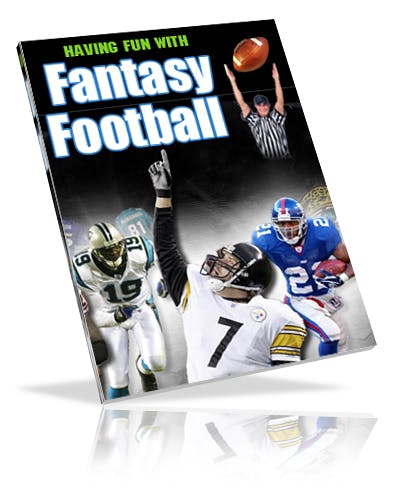I don’t often mix work with pleasure but when it comes to fantasy football, I’ll dip my pen in the company ink.
For the uninitiated, fantasy football is when you pick various NFL players and create a team and compete against 10-12 other people doing the same. At the last few places I’ve worked, I’ve been involved in fantasy football leagues of various types. When I worked in HR full-time, it was an easy activity to be included in because everyone wanted to really beat you and then come gloating into your office on Monday morning.
While I love activities like this, I don’t know how much of it I want to creep into workplace dynamics to get more productivity out of employees.
Gamification and the workplace
I talked last week to Paul Hebert about incentives and one of the things we talked about is using game theory to make incentive programs function better.
Let’s say you have a points-based incentive program (one where you earn points that can turn into awards). While the idea of points might be gamification in and of itself, we can also add badges, a competitive element, and extra prizes for unique reasons for rewards in order to get more out of the program.
Is that a problem? Laurie Ruettimann writes on The Cynical Girl:
And now there’s a (relatively) new trend in the workforce to make your life more like a game, and thus, more fun. It’s called the gamification of work. It refers to the concept where an employer tries to trick you into having ‘fake fun’ or ‘forced fun’ while you are completing the rote tasks that make up your daily job.
Sounds awesome, right?
It’s not.”
Ouch. And when you put it that way, it certainly sounds like a stinker.
Searching for silver bullets
The problem is that there is no silver bullet when it comes to getting the most out of your employees. While gamification may work for some employees (and let’s be clear, it probably does work for many), if John Hollon put a gold star on my TLNT profile every time I hit a post out of the park, I’d roll my eyes (Note to Lance: I will make sure I don’t).
But that also doesn’t mean I don’t appreciate the acknowledgement or the help to continue to write better. A rejection of a gamified workplace isn’t any indication of how much I appreciate the feedback.
If you have unpleasant jobs in your organization (and you know what they are), you’re going to have to combine techniques to hit as many real pain points as possible. Paying at or above market rate so they are taken care of. Removing barriers that make work frustrating, such as unnecessary bureaucracy and terrible bosses. Equip them and their co-workers with more than adequate knowledge so that no one feels that they have to carry more of a load at work.
Gamification? Sure, it could help your incentive program do better. But if you’re not doing any of those other things? Forget about it doing much positive good.
Difference between games and gamification
Every year, we get to hear about the lost productivity due to March Madness and NCAA brackets. Or maybe you’re like my colleagues who used to have an informal game to come up with marketing copy. Or perhaps you participate in team sports with colleagues, or are on a volunteer board with other co-workers.
Things like that can be great because games — real games that people want to participate in — can make for better work relationships. I might not be able to define a hard ROI on that, but I don’t need to tell you all of the advantages that can have.
Gamification done to manipulate results out of employees though? There’s a very short-lived promise there.
